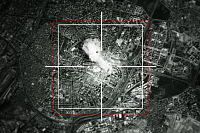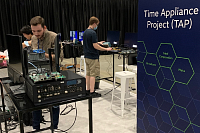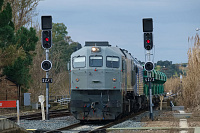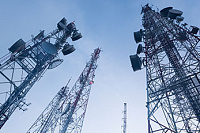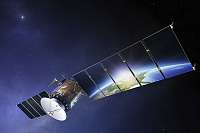|
The IEEE/IEC 60802 Industrial Time Sensitive Networking (TSN) profile describes the implementation of high-accuracy synchronization using IEEE 802.1AS (gPTP). This document provides an overview of the specifications for precision timing, and recommended best practice for proving gPTP performance of devices and networks. |
LATEST Simply fill in your email to instantly view this document, download it, and print a copy. The information you provide will be used in accordance with the terms of our Privacy Notice. |
To all intents and purposes we are at an intersection of IoT. Increasingly sophisticated sensors and ultra-high-definition cameras, machine learning algorithms and AI are now starting to work together effectively and deliver real-world advantages. Moreover, as industries have evolved to embrace the benefits offered by IoT, many networks and connected applications that must work together have moved to become Ethernet-based or are shifting in that direction.
Time synchronization has always been a critical aspect in communications networks, and ensuring Ethernet networks and end applications maintain timing performance is no exception. Beyond that, there are potential performance improvements that can be achieved in networks with even higher levels of precision synchronization. The question is, how can it be achieved?
Precision Time Protocol (PTP) is becoming the method of choice for time distribution via Ethernet. As implementations have increased, so too has the realization that different aspects of PTP capabilities suit different deployment needs, often in combination with other technologies. As such, several PTP ‘profiles’ now exist, offering more choice to end users. One example is the general PTP (gPTP) profile which has a number of unique features to achieve high timing accuracy. For example:
- Logical syntonization whereby frequency locking can be achieved with off-the-shelf components. This is more cost-effective for large scale deployments, and supports fast turn-on for ‘instant’ application needs.
- Timing path can be more easily reconfigured which aids redundancy and fault tolerance.
Of course, some applications inherently require precise synchronization due to functional requirements and associated international standards, while others receive a performance advantage from additional accuracy of timestamps or derived phase and frequency signals. Take for instance:
Self-driving autonomous cars
Connected and self-driving autonomous cars increasingly have in-car ethernet networks and also multiple applications with a need for time-synchronized actions. This could range from in-car infotainment for the individual passenger having the same or different audio-visual experience to autonomous driving and parking. In future this would also include monitoring and responding faster than humans to events such as a potential collision with moving or stationary objects or during a lane change etc.
The requirements for data-exchange with very precise timing and clearly serious implications of any error make robust timing a key component of system design.
Aircraft, helicopters, and surveillance drones
Applications for aircraft, helicopters and drones are getting more and more sophisticated. The benefits of unmanned flight in construction sites, search operations, and fire incident sites are seen to considerably reduce reaction times and risk to human life.
Likewise un-manned drone search operations are dependent on ultra-high-definition video from cameras combined with sensors and pre-configured GPS flight path which means all of these systems have to work together with very high precision timing information.
Immersive VR and AR experiences
Virtual reality and augmented reality is not only about immersive gaming and xD experiences, but is also vital for teleportation and holoportation applications to improve the quality of day-to-day post-pandemic remote working conditions. This again is only possible through high-definition video data, sensors, and AI all operating in sync.
High precision timing accuracy is not just for standards
Whilst standard bodies define the operating requirements requirements (IEC/IEEE 60802 for Industrial Automation being one such example) for such Ethernet networks and provide different profiles to support certain applications, even those not operating to stringent time constraints standards face serious risks if they don’t strive for high accuracy. The examples above show a range of environments where synchronization issues can cause problems from poor user experience and commercial unviability all the way to risk of life.
Time synchronization requirements for the products and applications that operate in these environments are very stringent and require measurement to the highest accuracy and over high bandwidth line rates to reduce any performance risks and maintain reliability, not just because the standard said so, but because timing matters!
Related products: Paragon-neo
Related literature: Timing and Synchronization Library
Ratish Kumar Mani
Product Manager
To all intents and purposes we are at an intersection of IoT. Increasingly sophisticated sensors and ultra-high-definition cameras, machine learning algorithms and AI are now starting to work together effectively and deliver real-world advantages. Moreover, as industries have evolved to embrace the benefits offered by IoT, many networks and connected applications that must work together have moved to become Ethernet-based or are shifting in that direction.
Time synchronization has always been a critical aspect in communications networks, and ensuring Ethernet networks and end applications maintain timing performance is no exception. Beyond that, there are potential performance improvements that can be achieved in networks with even higher levels of precision synchronization. The question is, how can it be achieved?
Precision Time Protocol (PTP) is becoming the method of choice for time distribution via Ethernet. As implementations have increased, so too has the realization that different aspects of PTP capabilities suit different deployment needs, often in combination with other technologies. As such, several PTP ‘profiles’ now exist, offering more choice to end users. One example is the general PTP (gPTP) profile which has a number of unique features to achieve high timing accuracy. For example:
- Logical syntonization whereby frequency locking can be achieved with off-the-shelf components. This is more cost-effective for large scale deployments, and supports fast turn-on for ‘instant’ application needs.
- Timing path can be more easily reconfigured which aids redundancy and fault tolerance.
Of course, some applications inherently require precise synchronization due to functional requirements and associated international standards, while others receive a performance advantage from additional accuracy of timestamps or derived phase and frequency signals. Take for instance:
Self-driving autonomous cars
Connected and self-driving autonomous cars increasingly have in-car ethernet networks and also multiple applications with a need for time-synchronized actions. This could range from in-car infotainment for the individual passenger having the same or different audio-visual experience to autonomous driving and parking. In future this would also include monitoring and responding faster than humans to events such as a potential collision with moving or stationary objects or during a lane change etc.
The requirements for data-exchange with very precise timing and clearly serious implications of any error make robust timing a key component of system design.
Aircraft, helicopters, and surveillance drones
Applications for aircraft, helicopters and drones are getting more and more sophisticated. The benefits of unmanned flight in construction sites, search operations, and fire incident sites are seen to considerably reduce reaction times and risk to human life.
Likewise un-manned drone search operations are dependent on ultra-high-definition video from cameras combined with sensors and pre-configured GPS flight path which means all of these systems have to work together with very high precision timing information.
Immersive VR and AR experiences
Virtual reality and augmented reality is not only about immersive gaming and xD experiences, but is also vital for teleportation and holoportation applications to improve the quality of day-to-day post-pandemic remote working conditions. This again is only possible through high-definition video data, sensors, and AI all operating in sync.
High precision timing accuracy is not just for standards
Whilst standard bodies define the operating requirements requirements (IEC/IEEE 60802 for Industrial Automation being one such example) for such Ethernet networks and provide different profiles to support certain applications, even those not operating to stringent time constraints standards face serious risks if they don’t strive for high accuracy. The examples above show a range of environments where synchronization issues can cause problems from poor user experience and commercial unviability all the way to risk of life.
Time synchronization requirements for the products and applications that operate in these environments are very stringent and require measurement to the highest accuracy and over high bandwidth line rates to reduce any performance risks and maintain reliability, not just because the standard said so, but because timing matters!
LATEST
PTP PRIMER
The IEEE/IEC 60802 Industrial Time Sensitive Networking (TSN) profile describes the implementation of high-accuracy synchronization using IEEE 802.1AS (gPTP). This document provides an overview of the specifications for precision timing, and recommended best practice for proving gPTP performance of devices and networks. Simply fill in your email to instantly view this document.
![]()
The information you provide will be used in accordance with the terms of our Privacy Notice.
Related product: Paragon-neo
Related literature: Timing and Synchronization Library
Ratish Kumar Mani
Product Manager




